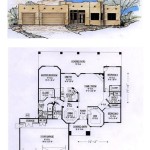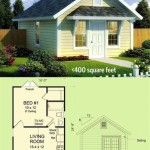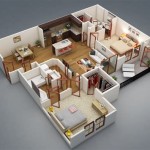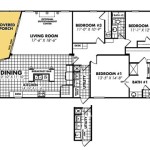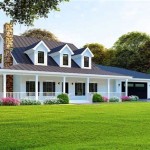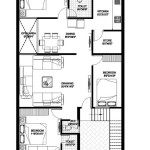Simple 6 Bedroom House Plans: Considerations and Design Elements
The design and implementation of a simple 6-bedroom house plan necessitate careful consideration of several factors, ranging from space allocation and functional requirements to aesthetic appeal and adherence to building codes. Such a large residence caters to sizable families, multi-generational households, or individuals who require ample space for guests, home offices, or recreational activities. This article will explore key aspects to consider when developing simple 6-bedroom house plans, focusing on space efficiency, functionality, and architectural design.
Understanding Space Requirements and Layout
The foundation of any effective 6-bedroom house plan lies in understanding the specific space requirements of the occupants. This involves determining the desired size and layout of each bedroom, bathroom, living area, kitchen, and any other specialized spaces like home offices, game rooms, or libraries. A preliminary assessment should encompass the lifestyle of the residents, their daily routines, and their long-term needs. For instance, families with young children may prioritize play areas close to the main living spaces, while those who frequently entertain might focus on a spacious and well-equipped kitchen and dining area. The age and mobility of the residents must also be considered, particularly when planning the placement of bedrooms and bathrooms.
The layout of the house is crucial for ensuring a smooth flow of traffic and maximizing the usability of each room. A traditional two-story design is a common approach for 6-bedroom houses, offering a clear separation between private spaces (bedrooms on the upper level) and communal areas (living room, kitchen, and dining room on the main level). However, single-story designs, or ranch-style homes, can also be suitable, particularly on larger properties. In such cases, careful zoning is essential to prevent noise and activity from disrupting the tranquility of bedrooms. Consider the placement of the master suite, aiming for a location that offers privacy and minimizes disturbance from other areas of the house. Furthermore, the number and placement of bathrooms are critical to convenience and efficiency. A minimum of three bathrooms is generally recommended for a 6-bedroom house, with at least one en-suite bathroom for the master bedroom.
Space efficiency is paramount in larger houses. Corridors and hallways should be minimized to prevent wasted space. Open-concept designs, where the living room, dining room, and kitchen flow together, can create a sense of spaciousness and improve natural light distribution. Careful consideration should be given to storage solutions, including built-in closets, shelving, and pantries, to maintain a clutter-free environment. The incorporation of multi-functional spaces, such as a living room that can also serve as a home theater or a guest room that doubles as a home office, can enhance the overall utility of the house.
Functional Considerations and Design Principles
Beyond the basic layout, several functional considerations can significantly impact the livability of a 6-bedroom house. These include natural light and ventilation, accessibility, energy efficiency, and noise control. Maximizing natural light is essential for creating a bright and welcoming atmosphere. Large windows and skylights can be strategically positioned to capture sunlight throughout the day. The orientation of the house on the property should also be considered, aiming to maximize sunlight exposure in living areas and minimize it in bedrooms during hot afternoons. Proper ventilation is crucial for maintaining air quality and preventing moisture buildup. Cross-ventilation, achieved by placing windows on opposite sides of the house, is an effective way to promote airflow.
Accessibility is an important consideration, particularly for individuals with mobility limitations. Wide doorways, ramps, and accessible bathrooms can be incorporated into the design to ensure that the house is usable by everyone. Consider the placement of bedrooms and bathrooms on the ground floor to provide easy access for elderly or disabled residents. Energy efficiency is another critical factor to consider, both for environmental reasons and for reducing utility costs. Proper insulation, energy-efficient windows and doors, and high-efficiency heating and cooling systems can significantly reduce energy consumption. Consider incorporating sustainable materials and design features, such as solar panels and rainwater harvesting systems, to further enhance the environmental performance of the house.
Noise control is particularly important in a house with multiple bedrooms. Strategically placing bedrooms away from noisy areas, such as the kitchen or living room, can help to minimize disturbances. Soundproofing materials, such as insulation and dense drywall, can be used to reduce noise transmission between rooms. Consider the use of rugs and carpets to absorb sound in living areas. The design of the staircase can also impact noise levels. A closed staircase, with solid risers and treads, will generally be quieter than an open staircase.
Architectural Style and Aesthetic Considerations
The architectural style of a 6-bedroom house should reflect the preferences of the homeowners and the surrounding environment. A simple design does not necessarily mean a lack of style; rather, it emphasizes clean lines, functional layouts, and minimal ornamentation. Popular architectural styles for 6-bedroom houses include traditional, contemporary, and farmhouse. Traditional styles often feature symmetrical facades, gabled roofs, and decorative detailing such as moldings and trim. Contemporary styles are characterized by clean lines, large windows, and open floor plans. Farmhouse styles combine rustic charm with modern functionality, featuring elements such as exposed beams, shiplap siding, and large porches.
The exterior of the house should be visually appealing and blend seamlessly with the landscape. Consider the use of natural materials, such as wood, stone, and brick, to create a warm and inviting appearance. The color palette should be carefully selected to complement the architecture and the surrounding environment. Landscaping plays a crucial role in enhancing the curb appeal of the house. Well-maintained lawns, trees, and shrubs can create a sense of tranquility and privacy. Consider incorporating outdoor living spaces, such as patios, decks, or porches, to extend the living area and provide opportunities for relaxation and entertainment.
The interior design should be both functional and aesthetically pleasing. The layout and flow of the rooms should be carefully considered to create a comfortable and inviting atmosphere. The color palette should be consistent throughout the house, creating a sense of harmony and unity. Furniture should be selected for both its style and its functionality. Consider the scale of the furniture in relation to the size of the rooms. Lighting plays a crucial role in creating the desired ambiance. A combination of natural and artificial lighting can be used to illuminate the rooms and highlight architectural features. Decorative elements, such as artwork, rugs, and accessories, can be used to add personality and character to the house.

6 Quartos Sq Ft 6b4b W Estudo Min Espaço Extra Casa Planos De Korel Home Designs Bedroom House Plans 1 Simple

6 Bedroom House Plans Houseplans Blog Com

6 Bedroom House Plans Houseplans Blog Com

6 Bedroom House Plans Houseplans Blog Com

10 Marla House Plan Model N Plans

6 Bedroom Barndominium Floor Plans The 9 Best Available

6 Bedroom House Plans Houseplans Blog Com

Pin On Amigurumi

4 Story 6 Bedroom House Plan

100 Best 6 Bedroom House Plans Ideas In 2024

